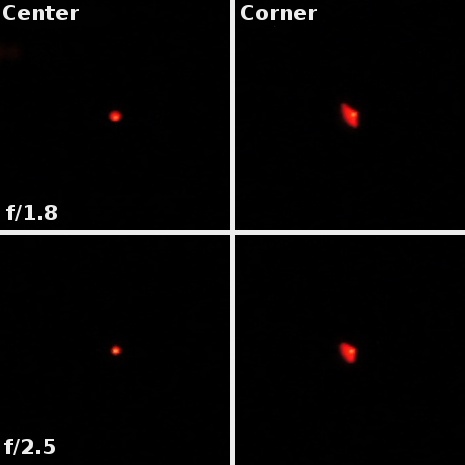Sony DT 35 mm f/1.8 SAM
7. Coma and astigmatism
Please Support UsIf you enjoy our reviews and articles, and you want us to continue our work please, support our website by donating through PayPal. The funds are going to be used for paying our editorial team, renting servers, and equipping our testing studio; only that way we will be able to continue providing you interesting content for free. |
- - - - - - - - - - - - - - - - - - - - - - - - - - - - - - - - - - - - - - - - - - - - - - - -
As you can see in the crops below the coma is keenly felt and greatly contributes to the decrease of resolution on the edge of the frame. What’s more, it doesn’t disappear even on stopping down by 1 EV. For comparison the Nikkor 1.8/35 also showed noticeable coma at the maximum relative aperture but on stopping down the level of that aberration decreased sharper than in the case of the Sony.

The astigmatism is on a moderate level of 8.5%. It is a value that shouldn’t bother us, providing that it doesn’t start to increase after some time. Unfortunately in the case of the cheapest lenses, which bodies are made of bad quality materials in order to save as much as it is possible, off-axis aberration sometimes increase out of control as time goes.






